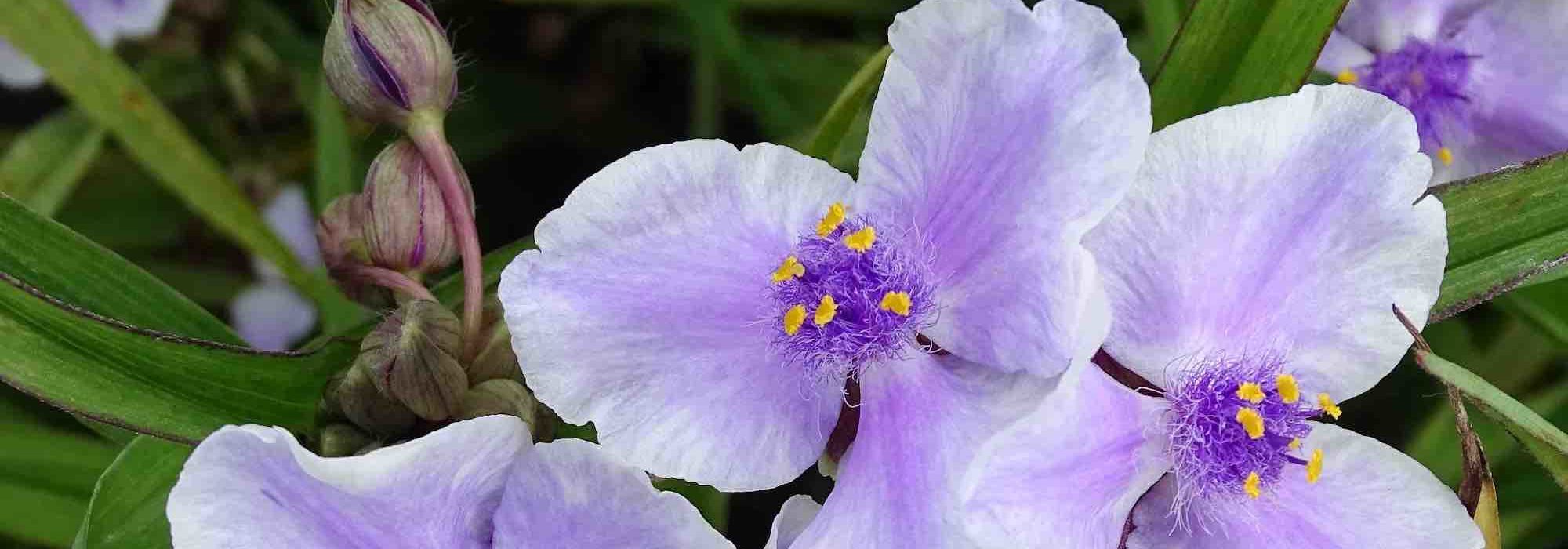
Growing Virginia Tradescantia in a pot
To enjoy a long-lasting flowering
Contents
Tradescantia or Virginia spiderwort is a carefree perennial for cool soil. It offers ephemeral flowers every day for several months in summer (or more!) that bloom in the morning and fade by the end of the day. These numerous small flowers, measuring 3 cm, are constantly renewed and flourish from June to August, and for some varieties, from May to October.
Tradescantia virginiana (T. andersoniana) enjoy sunlight to flower but may decline more quickly in scorching conditions. In pots, it is essential to ensure they are watered sufficiently to keep their substrate cool and to provide them with a semi-shaded position. Discover in detail how to grow this lovely perennial with lush foliage and charming, abundant flowering in pots.
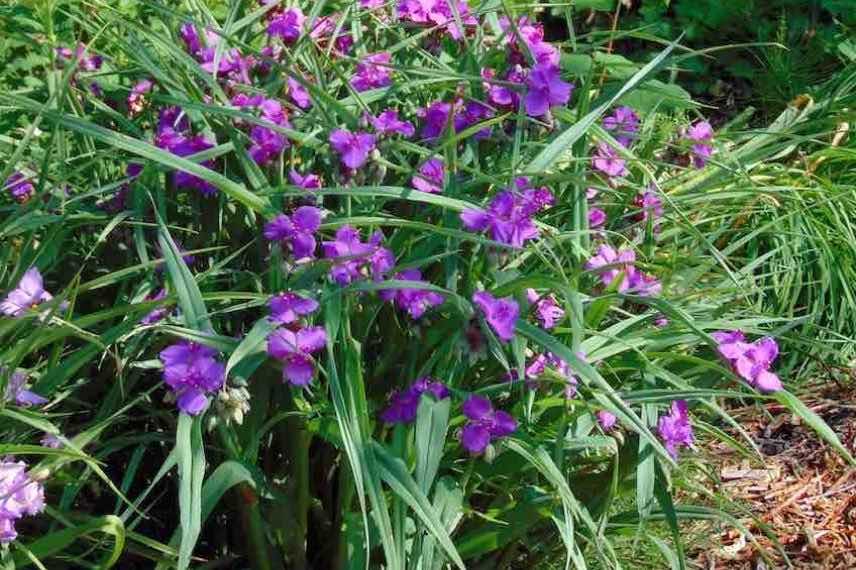
Virginia spiderwort
What type of pot?
To grow a Tradescantia in a pot, select the material of your choice while avoiding terracotta. Being porate, water evaporates quickly, and for a plant that requires a moist substrate to thrive, this choice is not wise. However, ensure you have a pot with drainage holes to prevent water from stagnating.
Tradescantia typically forms a clump in the ground, reaching a ripeness of 50 cm in all directions. Choose a pot that is approximately 30 cm deep and ensure it can comfortably spread to a width of 30 to 40 cm. For a display of multiple plants, be generous accordingly, even though the plants will adapt to the available space and you can divide the clump after 2 or 3 years.
You can also plant it in a hanging basket.
What kind of substrate?
It is about choosing or composing a substrate with good water retention qualities.
- You can use only a quality horticultural compost
- You can also make your own mix with 1/3 garden soil, 1/3 compost, 1/3 compound
- Ensure proper drainage at the bottom of the pot
Discover other Tradescantia - Spiderwort
View all →Available in 1 sizes
Available in 1 sizes
Available in 0 sizes
Available in 0 sizes
Available in 2 sizes
Available in 1 sizes
Available in 2 sizes
Available in 1 sizes
Available in 3 sizes
Available in 1 sizes
When and how to plant?
Plant Virginia bluebell in autumn, between September and November, or in late winter / early spring, between February and May.
Proceed as follows:
- Place a drainage layer at the bottom of the pot using clay balls or pumice
- Pour your mix or potting soil until about halfway up the pot
- Place your plant and fill in with your substrate
- Firm down
- Water generously
- If the substrate level has dropped after watering, top up to 2 cm below the rim of the pot
Mulch to keep the substrate cool for longer.
What exposure does the Virginia Bluebell require?
In pots, a semi-shaded position is wise to prevent the young plant from suffering too much from drought and the scorching sun that can damage its delicate flower. Although Tradescantia blooms more in sunlight, it prefers to be sheltered from high temperatures from noon to 4 PM by being more in the shade, especially in summer.
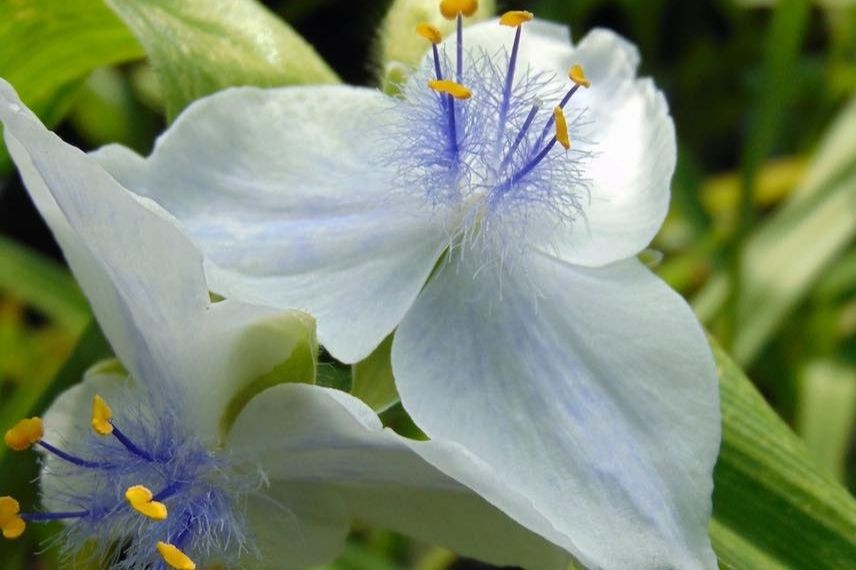
The Ephemeral, here Tradescantia ‘Osprey’, enjoys a semi-shaded position
Watering and fertilising
You understand, Tradescantia cannot tolerate being dry for long, so ensure to keep the substrate consistently moist. This will likely require watering daily in summer. In spring, plan to water 2 to 3 times a week. Adjust according to your region and the pot’s exposure. Watering is necessary throughout the growth of the foliage and flowering.
Virginia Bluebell does not require fertiliser. However, if you keep the pot for several years, adding compost or worm compost at the base of the plant every spring will be beneficial.
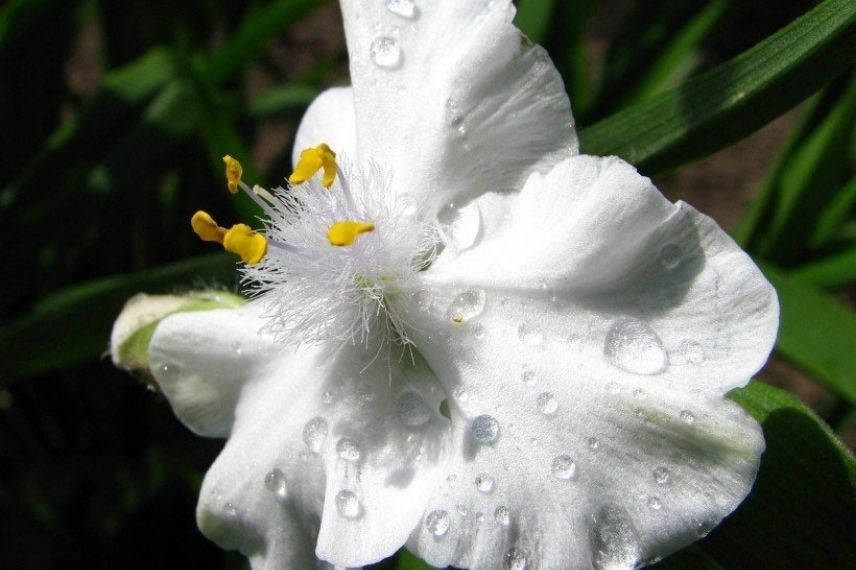
Tradescantia andersoniana ‘Innocence’
Care
Maintenance is limited: cut faded flowers to encourage a long flowering period. In the height of summer, you can optionally cut the flower spikes back to the ground to induce a new flowering. You may also choose to cut back the entire clump to renew the foliage, which tends to become damaged. This will also lead to a new flowering in autumn. In November, cut the clump of the plant back to ground level.
After 3 or 4 years, you can divide the clump to make space in the pot and create a second pot to gift a lovely Virginia Bluebell!
The most suitable varieties
All varieties of Tradescantia andersoniana are suitable for pot cultivation. Indeed, they are all quite similar in size, ranging from approximately 25 cm to 50 cm in height with a spread of 30 to 50 cm. They all exhibit similar behaviour and needs.
However, if you want to fill a rather small pot, about 20 cm deep and wide, then choose the variety ‘Little Doll’, the most compact in our catalogue, which will reach 30 cm in width at maturity in open ground and 25 cm in height. It is a lovely variety with light blue flowers. It has the advantage of keeping its foliage intact throughout the season, whereas the foliage of Tradescantia generally deteriorates a bit in summer. It flowers from June to August.
We should also mention the variety ‘Blushing Bride’, whose foliage is variegated with pink on the young leaves and then white on the mature leaves. It has broader foliage than other Spiderworts. To admire these lovely colour spots and their evolution, a pot is a pleasant choice. ‘Blushing Bride’ features white flowering from May to October.
Note that you can also grow ‘Blushing Bride’ as an indoor plant, in which case you should find it a very bright spot and use potting soil for indoor plants. Adding sphagnum at a rate of 10 to 20% of the substrate acts as a good moisture retainer.
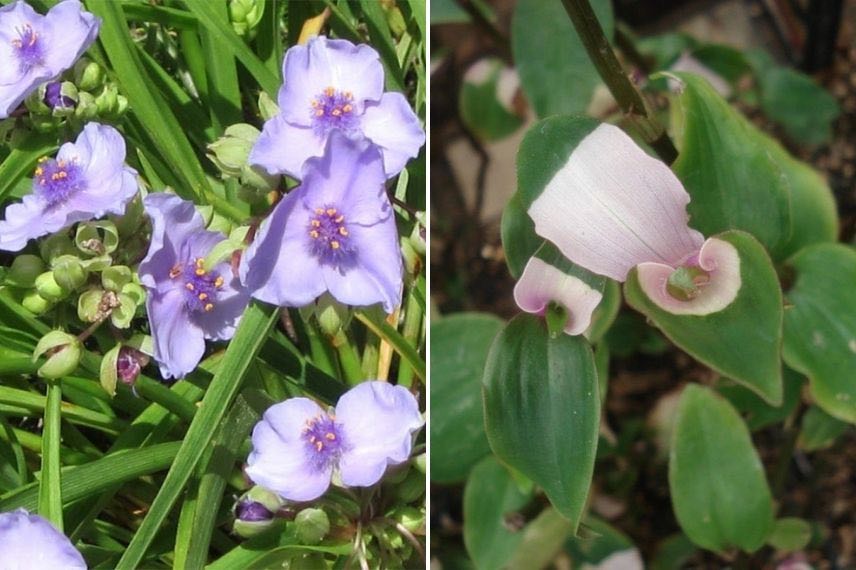
Tradescantia ‘Little Doll’ and Tradescantia ‘Blushing Bride’
Pot composition proposal
Here is a very bright composition for a pot or container in partial shade, featuring foliage and long-lasting flowering.
Here you will find Tradescantia andersoniana ‘Sweet Kate’ with its beautiful ribbon-like golden yellow foliage and intense blue flowers. Pair it with a Heuchera ‘Plum Royale’ with silver-purple leaves and an Aster ageratoides ‘Adustus Nanus’ with delicate lavender flowers and a yellow centre.

Tradescantia ‘Sweet Kate’, Aster ‘Adustus Nanus’, Heuchera ‘Plum Royale’
- Subscribe!
- Contents
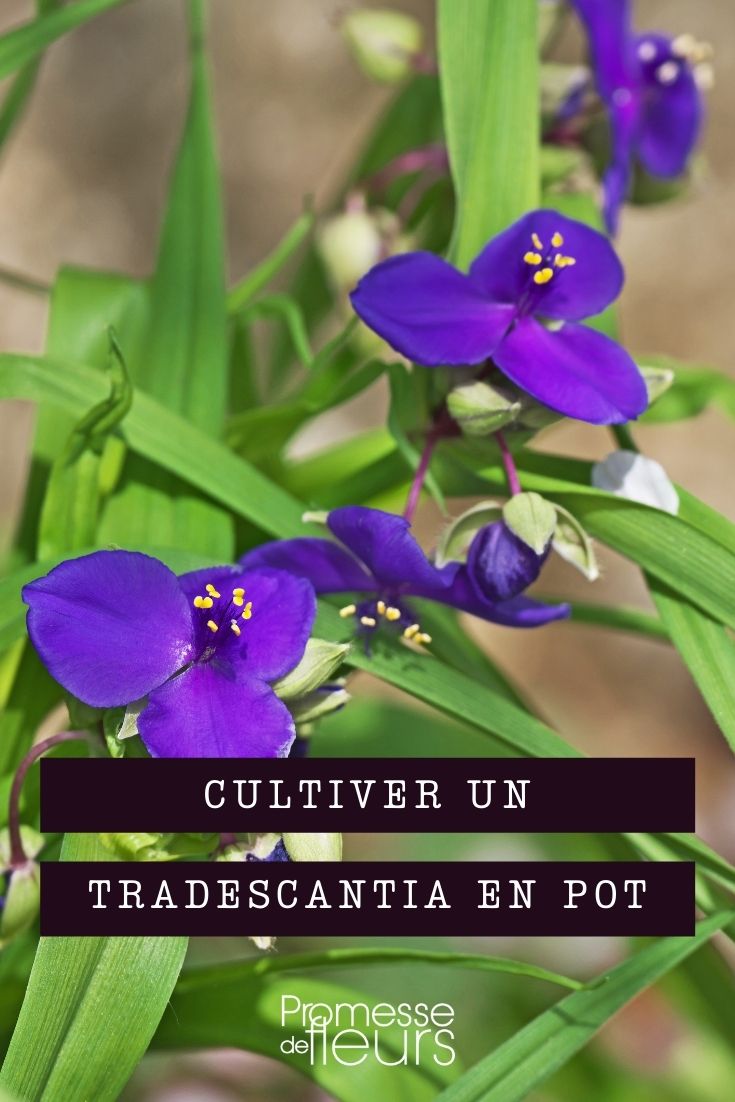
































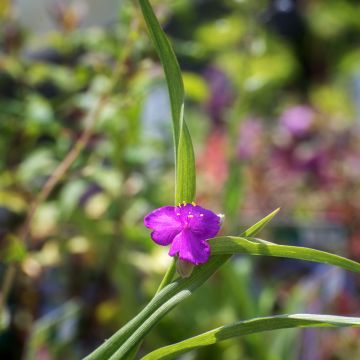
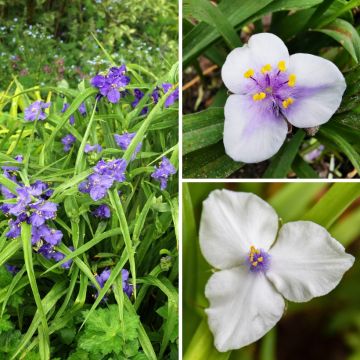
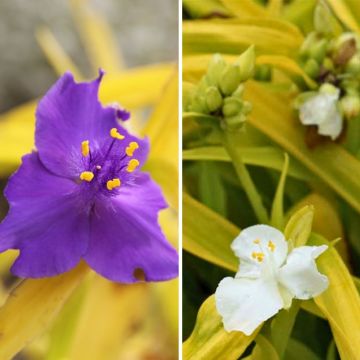
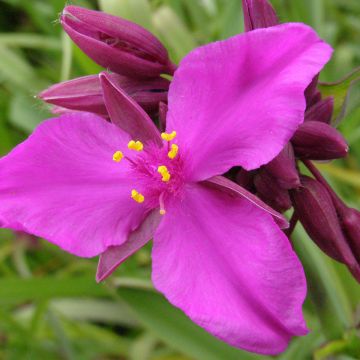

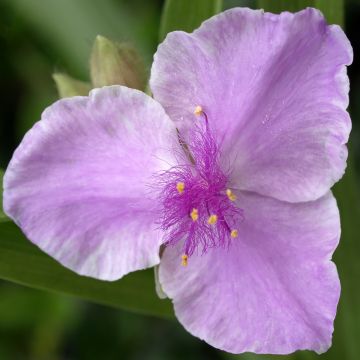
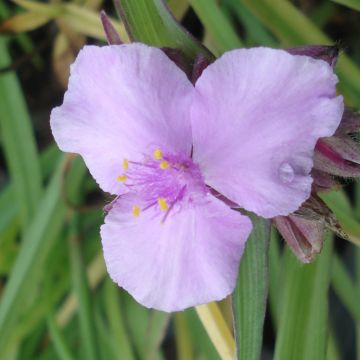
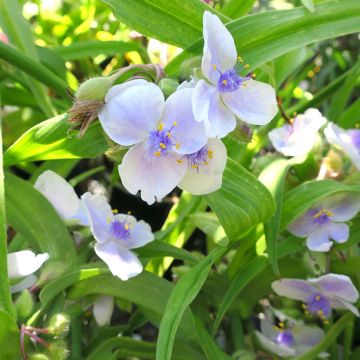
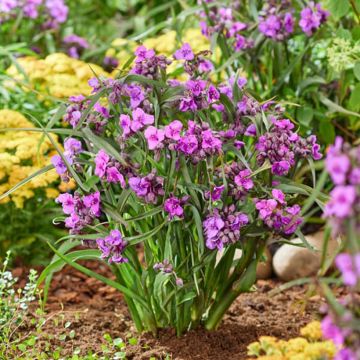
Comments